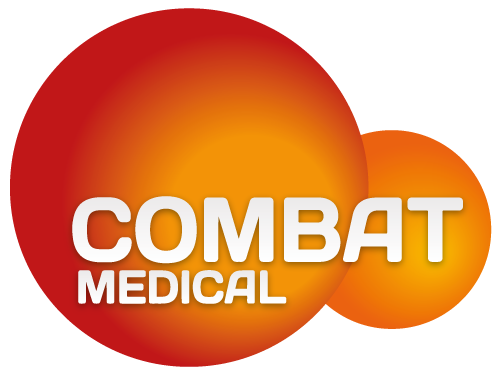Pancreatic cancer remains the world’s third deadliest form of cancer, behind lung and colorectal cancer. What makes pancreatic cancer so dangerous is largely due to its extremely aggressive nature and difficulties in early diagnosis. Among its various types, pancreatic ductal adenocarcinoma (PDAC) stands out as the most common and lethal. Despite decades of research, survival rates remain dismal, with only about 10% of patients surviving beyond five years after diagnosis.
About Pancreatic Ductal Adenocarcinoma
PDAC originates in the cells lining the ducts of the pancreas. This form of cancer is notorious for its ability to spread quickly to nearby organs, including the liver and lungs. Symptoms often remain vague – such as abdominal pain, weight loss, and jaundice – until the disease has reached an advanced stage.
The Role of Enzymes in Cancer Progression
Enzymes play a critical role in cell function, and their dysregulation often leads to cancer. Recent research carried out by Bharti Garg et al, published by Cancer Research on 2nd Jan 2025, has discovered that the enzyme MICAL2 plays a significant role in the progression and aggressiveness of PDAC. A link to the study can be found here:
https://pubmed.ncbi.nlm.nih.gov/39745352
MICAL2 and Its Function
MICAL2 belongs to a family of enzymes known to influence cytoskeletal dynamics, which are essential for cell movement and division. In normal cells, MICAL2 helps regulate these processes. However, in PDAC, MICAL2 overexpression drives abnormal cell proliferation, aiding tumour growth and metastasis.
Overproduction of MICAL2 in Pancreatic Cancer
This latest study has revealed that patients with lower levels of MICAL2 expression live twice as long as those with higher levels. This enzyme’s overproduction stimulates tumour growth and metastases, making MICAL2 a potential therapeutic target.
KRAS Mutations: A Major Obstacle in Cancer Treatment
One of the most challenging aspects of treating PDAC lies in addressing KRAS mutations, which are found in over 90% of cases.
KRAS is a protein that regulates normal cell growth and division. When mutated, KRAS becomes permanently activated, driving uncontrolled cell proliferation and tumour formation. Unfortunately, its smooth surface has made it resistant to traditional drug development, earning it the label “undruggable.”
The Challenge of Targeting “Undruggable” KRAS
Efforts to directly inhibit KRAS have largely been unsuccessful. However, targeting molecules involved in its activity, such as MICAL2, offers a promising alternative. By focusing on these auxiliary pathways, researchers hope to indirectly suppress KRAS activity and slow disease progression.
Potential Benefits of Reducing MICAL2 Levels
In preclinical models, lowering MICAL2 levels has led to significant reductions in tumour growth. Moreover, this approach may improve the effectiveness of existing treatments, such as chemotherapy, by making cancer cells more vulnerable to attack.
Implications for New Treatment Approaches
The discovery of MICAL2’s role in PDAC represents a major breakthrough, but how can it be translated into real-world therapies?
Exploring Alternative Therapies Using MICAL2 as a Target
Developing drugs that specifically inhibit MICAL2 is a logical next step. Additionally, combining MICAL2-targeted therapies with other treatment modalities could enhance their efficacy and provide a more comprehensive approach to managing PDAC.
These findings also highlight the importance of personalised medicine. By identifying patients with high MICAL2 expression, clinicians can tailor treatments to improve outcomes and prolong survival.
Combat’s HIPEC in Pancreatic Cancer Treatment
One promising therapeutic method showing potential in pancreatic cancer treatment is Hyperthermic Intraperitoneal Chemotherapy (HIPEC). This innovative technology has the ability to deliver high concentrations of chemotherapy directly to cancerous tissues while minimising systemic side effects.
The Combat PRS+Agitation System
The Combat PRS+Agitation System represents a cutting-edge advancement in HIPEC technology. This system uses Peritoneal Recirculation with agitation to enhance the delivery and distribution of chemotherapeutic agents. The use of CO2 bubbles improves the mixing and penetration of drugs, ensuring that the treatment reaches cancer cells more effectively.
The Role of CO2 Agitation in Enhancing Effectiveness
The addition of CO2 agitation allows for uniform drug distribution across the abdominal cavity. This innovation ensures that even hard-to-reach areas are treated, significantly increasing the therapy’s efficacy. By combining heat with CO2-aided circulation, HIPEC targets residual cancer cells post-surgery, reducing recurrence rates and improving patient outcomes.
The Future of Pancreatic Cancer Treatment?
The combination of MICAL2-targeted therapies and advanced techniques like HIPEC shows that there might be a light at the end of a long, dark tunnel for pancreatic cancer patients. With continued research, these approaches could redefine how this aggressive disease is treated.
As these therapies continue to be refined, they hold the potential to transform a once-deadly diagnosis into a manageable condition. The journey is far from over, but the strides made thus far are a testament to the power of focused scientific research and innovation.

